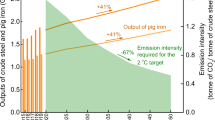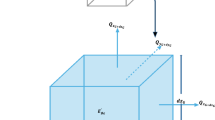Abstract
LITTLE data has, as yet, been published concerning the spacings of retained austenite in iron–carbon alloys when the quenched sample contains the quantity of carbon ascribed to the saturation point E (1.776 per cent carbon at 1,145° C.) shown in the iron–carbon diagram. The only data as yet found refer to samples of plain carbon steel (1 mm. in diameter) containing 1.74 per cent of carbon and quenched at 1,130° C., for which the authors1 give a = 3.613 and 3.624 A. The first of the samples, according to the authors, was decarburized.
This is a preview of subscription content, access via your institution
Access options
Subscribe to this journal
Receive 51 print issues and online access
$199.00 per year
only $3.90 per issue
Buy this article
- Purchase on SpringerLink
- Instant access to full article PDF
Prices may be subject to local taxes which are calculated during checkout
Similar content being viewed by others
References
See Epstein, S., “The Alloys of Iron and Carbon”, 1, “Constitution” (New York: McGraw-Hill Book Co., Inc., 1936).
Wrazej, W. J., J. Iron and Steel Inst., July 1946.
Wrazej, W. J., Nature, 163, 212 (1949).
Author information
Authors and Affiliations
Rights and permissions
About this article
Cite this article
WRAZEJ, W. Spacings of Retained Austenite in Quenched White Cast Iron. Nature 165, 447–448 (1950). https://doi.org/10.1038/165447a0
Issue date:
DOI: https://doi.org/10.1038/165447a0



